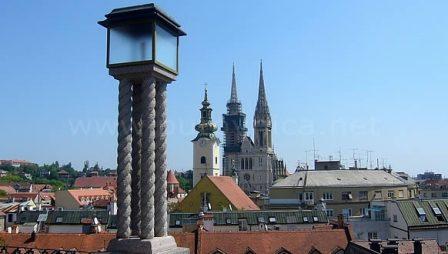
GRADEC - KAPTOL - LOWER CITY
Although archaeological research proved the existence of life around today's Zagreb already in the stone age, Zagreb, as we know it and that makes its historic center was built in the Middle Ages the two hills: the secular Gradec and ecclesiastical Kaptol.
Although archaeological research proved the existence of life around today's Zagreb already in the stone age, Zagreb, as we know it and that makes its historic center was built in the Middle Ages the two hills: the secular Gradec and ecclesiastical Kaptol.
The first written mention of the city dates from the 1094th when the Hungarian King Ladislas establishes the Zagreb diocese on Kaptol. The second part of Zagreb nucleus, Gradec, 1242nd The Charter of King Bela IV granted the status of free royal town. During the 14th and 15 century buildings on two hills, prosper, and in the second half of the 17th century, Zagreb became a university town and seat of government. Differences between the episcopal city and of the Royal Borough are slowly disappearing, and finally deleted 1850th when combined into the city of Zagreb. In the late 19th century, built the magnificent palace of the Lower Town of Zagreb and extends to the river Sava. In the mid 20th century, the construction of Novi Zagreb, the city has exceeded the Sava River, which it was defended from invaders for centuries. Today, Zagreb is administrative, cultural and business center of Croatian.
Image gallery Order photographs
Location
Tel: +385 (0)1 489 8555
Coordinates: 45.81317803, 15.97834826 How to get there?
By clicking "How to get there" Google maps will open. Insert your starting adress and click "Get directions". A datailed printable plan will appear.








